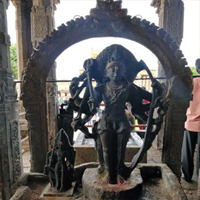Treasures of India: Lost and Found by Juhi Mirza
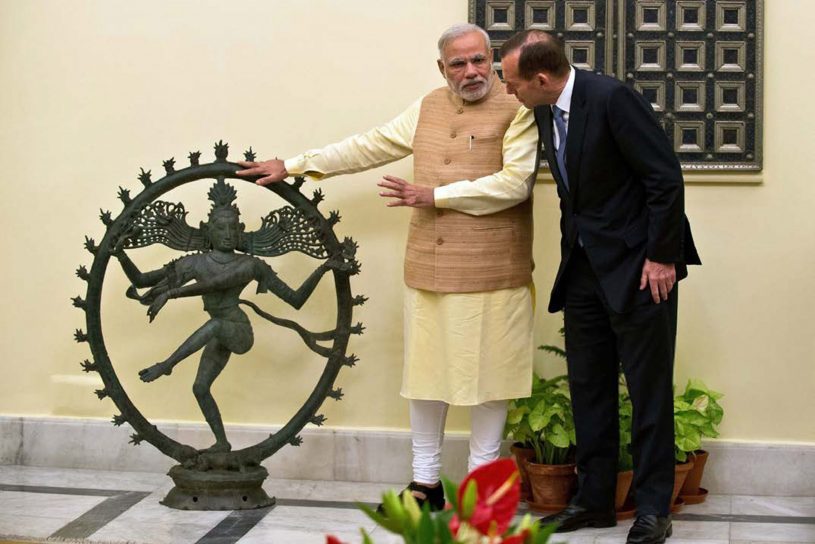
Over the last seven years, the Prime Minister Narendra Modi’s government has been instrumental in bringing over 200 stolen artifacts or antiquities worth millions of dollars back to India from across the world while the previous UPA government was only able to bring back one stolen artifact to India in its 10 years of government.
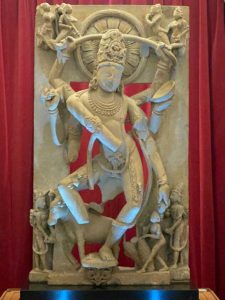 Prime Minister Modi announced last year that an ancient statue of Devi Annapurna, stolen from Varanasi in Uttar Pradesh about a century ago, is being brought back home from Canada. The statue of the goddess of food, holding a bowl of rice, is said to be an 18th-century idol carved in the Benaras style. The return of the idol is a major success story in India’s quest for its lost ancient treasures, a mission being spearheaded by PM Modi. “Every Indian will be proud to know that a very old idol of Devi Annapurna is returning to India from Canada. The coming back of the idol is pleasing for all of us. Just like the idol of Mata Annapurna, a lot of our invaluable heritage has suffered at the hands of international gangs,” the Prime Minister said.
Prime Minister Modi announced last year that an ancient statue of Devi Annapurna, stolen from Varanasi in Uttar Pradesh about a century ago, is being brought back home from Canada. The statue of the goddess of food, holding a bowl of rice, is said to be an 18th-century idol carved in the Benaras style. The return of the idol is a major success story in India’s quest for its lost ancient treasures, a mission being spearheaded by PM Modi. “Every Indian will be proud to know that a very old idol of Devi Annapurna is returning to India from Canada. The coming back of the idol is pleasing for all of us. Just like the idol of Mata Annapurna, a lot of our invaluable heritage has suffered at the hands of international gangs,” the Prime Minister said.
India’s archaeological treasures have been constant victims of plundering and looting, resulting in several rare specimens of antiquity scattered throughout the world. Under the guidance of PM Modi, the initiative to bring them home has been revived and has transpired into a mission. Several programs and efforts have been initiated by authorities to procure these artifacts from all over the world. The Ministry of External Affairs, along with law enforcement agencies, has been actively pursuing the retrieval of stolen and smuggled Indian artifacts, and several pieces have been returned to India from various countries, including the US, Australia, the UK, Canada, and Germany.
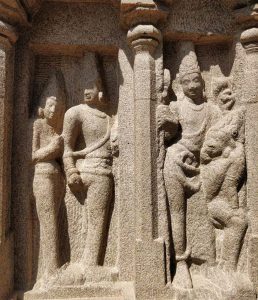 Here’s a look at some that have successfully found their way back home:
Here’s a look at some that have successfully found their way back home:
Over the last few years, the United States of America has returned 178 antiquities to India. The list includes some of the finest pieces of terracotta idols belonging to various periods, along with elegant statues of religious and sentimental value. One of the most significant in this consignment is a bronze idol of Manikkavachakar, a saint who had found patronage under the Chola Dynasty (9-13th century AD). The idol had allegedly been stolen from a temple in the Sripuranthan Village in the Ariyalur district of Tamil Nadu and smuggled into the US. The idol, worth at least a million US dollars in the open market, was recovered by American authorities in 2015 and returned. In a written reply to the Lok Sabha earlier this month, the Ministry of Culture said that in total, nine antiquities or artifacts were repatriated to India from Australia, two from Canada, eight from the UK, and one each from Germany and Singapore.
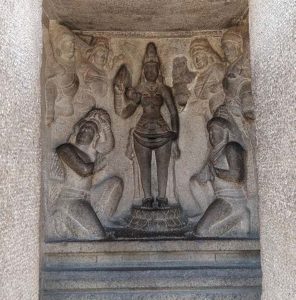 Another important idol returned by the USA is an idol of Manjusri, a Bodhisattva associated with Mahayana Buddhism. Dating back to the 12th century, the idol depicts Manjusri holding a sword and a lotus in his hands, and is painted in gold leaf. It has immense significance in the history of Buddhism, with the sword symbolizing the Bodhisattva’s intent to cut or remove the fog of illusion and bring forth light. The idol also denotes wisdom and is highly revered in the Indian and Buddhist pantheons. The statue was allegedly stolen from a temple in Bodh Gaya, Bihar, in the late 1980s. It was repatriated in 2018 from the Auckland Art Museum at the University of North Carolina.
Another important idol returned by the USA is an idol of Manjusri, a Bodhisattva associated with Mahayana Buddhism. Dating back to the 12th century, the idol depicts Manjusri holding a sword and a lotus in his hands, and is painted in gold leaf. It has immense significance in the history of Buddhism, with the sword symbolizing the Bodhisattva’s intent to cut or remove the fog of illusion and bring forth light. The idol also denotes wisdom and is highly revered in the Indian and Buddhist pantheons. The statue was allegedly stolen from a temple in Bodh Gaya, Bihar, in the late 1980s. It was repatriated in 2018 from the Auckland Art Museum at the University of North Carolina.
Along with the idol of Manjusri, a granite phallus idol of Lord Shiva was also returned. The iconic Shiva Linga dates back to the 12th century and traces its origin to the Chola Dynasty rulers of Southern India. Carved in accordance with the laws of traditional iconography, the idol depicts the Lord holding a parasu, or battle axe, along with Krishna Mruga, or a deer. It was stolen from Tamil Nadu and was on display at the Birmingham Museum in Alabama.
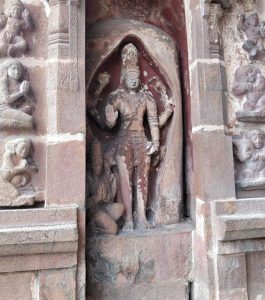 In November 2020, a set of three bronze idols of Lord Rama, Lord Lakshmana, and Goddess Sita was returned to India by authorities of the United Kingdom. These bronze idols, rich in artistic heritage and belonging to the Vijayanagar Empire (1336–1646), had been stolen in the 1970s from a temple in Tamil Nadu’s Nagapattinam district and were recovered from a private collector in London.
In November 2020, a set of three bronze idols of Lord Rama, Lord Lakshmana, and Goddess Sita was returned to India by authorities of the United Kingdom. These bronze idols, rich in artistic heritage and belonging to the Vijayanagar Empire (1336–1646), had been stolen in the 1970s from a temple in Tamil Nadu’s Nagapattinam district and were recovered from a private collector in London.
Another valuable statue that was returned to India last year by the UK is an ancient Lord Shiva idol, which was stolen from Ghateswar Temple in Baroli, Rajasthan. The idol, standing around four feet high, depicts Lord Shiva in a Chatura Nataraja pose and dates back to the 9th-10th century. It was in the possession of a private collector. The High Commission of India in London played an active role in the repatriation of this priceless piece of art.
Canada, too, has returned several heritage artifacts to India in recent years. Among them is the statue of the “parrot lady,” a prized cultural representation of Indian history. The delicately carved sandstone statue of a woman holding a parrot is almost 900 years old and represents aspects of everyday life in ancient India. The sculpture that was in the possession of a private collector was returned to PM Modi by former Canadian PM Stephen Harper in 2015 during the Indian Prime Minister’s visit to Canada.
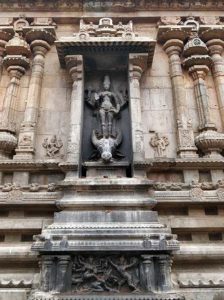 Among other Chola Dynasty artifacts returned to India are the bronze idols of Nataraja and Ardhanarishvara recovered in Australia. The idols date back to the 11th century AD and are regarded as some of the finest specimens of skilled bronze casting from the Chola period. Ardhanarishvara is an amalgamation of Lord Shiva and his consort Goddess Parvati in a half man-half woman form. Along with these, a stone relief of a pair of dwarpalo (mythical temple guards) had also been retrieved from Australia. Australia also returned to India a stone statue of Nagaraja (serpent king) from the 6th to 8th century period. These statues had been allegedly stolen from Indian temples.
Among other Chola Dynasty artifacts returned to India are the bronze idols of Nataraja and Ardhanarishvara recovered in Australia. The idols date back to the 11th century AD and are regarded as some of the finest specimens of skilled bronze casting from the Chola period. Ardhanarishvara is an amalgamation of Lord Shiva and his consort Goddess Parvati in a half man-half woman form. Along with these, a stone relief of a pair of dwarpalo (mythical temple guards) had also been retrieved from Australia. Australia also returned to India a stone statue of Nagaraja (serpent king) from the 6th to 8th century period. These statues had been allegedly stolen from Indian temples.
In a similar appreciable and welcoming gesture, Germany returned a piece of Indian history during German Chancellor Angela Merkel’s visit to India in 2015. The 10th-century idol of Mahishasuramardini, a form of Goddess Durga had gone missing from a temple in Kashmir over 20 years ago.
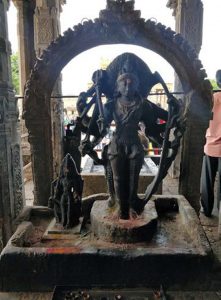 Over many decades, India has lost thousands of artifacts of cultural importance. In recent years, the government of India has been assiduously working towards the repatriation of stolen art objects, and the records of the Archaeological Survey of India (ASI) show that the government has been able to retrieve 40 art objects between 2014 and 2020 while an additional 75-80 art objects are in the pipeline to be returned. These priceless artifacts returned to India facilitate research and analysis on their origin and antiquity that further enriches our history and culture. Dr BR Mani, former Director General of the National Museum, New Delhi, said, “Due to the efforts of Prime Minister Narendra Modi and his emphasis on the importance of preserving national folklore and culture, returning of lost treasures and heritage exchange between nations have gained incredible momentum. This process has compelled other countries to look up to India as a cultural icon.”
Over many decades, India has lost thousands of artifacts of cultural importance. In recent years, the government of India has been assiduously working towards the repatriation of stolen art objects, and the records of the Archaeological Survey of India (ASI) show that the government has been able to retrieve 40 art objects between 2014 and 2020 while an additional 75-80 art objects are in the pipeline to be returned. These priceless artifacts returned to India facilitate research and analysis on their origin and antiquity that further enriches our history and culture. Dr BR Mani, former Director General of the National Museum, New Delhi, said, “Due to the efforts of Prime Minister Narendra Modi and his emphasis on the importance of preserving national folklore and culture, returning of lost treasures and heritage exchange between nations have gained incredible momentum. This process has compelled other countries to look up to India as a cultural icon.”
Such pursuit of bringing back pieces of our history and filling gaps in historical information is of the utmost importance in integrating a sense of cultural assimilation. Artifacts of cultural significance are an integral part of Indian heritage and play an important role in defining the historical context of the country. These rare antiquities have not only helped revive India’s impressive past, but have also managed to build and foster strong cultural, social, and economic ties with other countries and their people.
 About the Author
About the Author
Juhi Mirza holds a Master’s Degree in Archaeology and is a keen enthusiast for all things ancient. She takes a deep interest in the cultures and traditions of India and the world. She has traveled extensively to document ancient ruins and cultures across the world.

